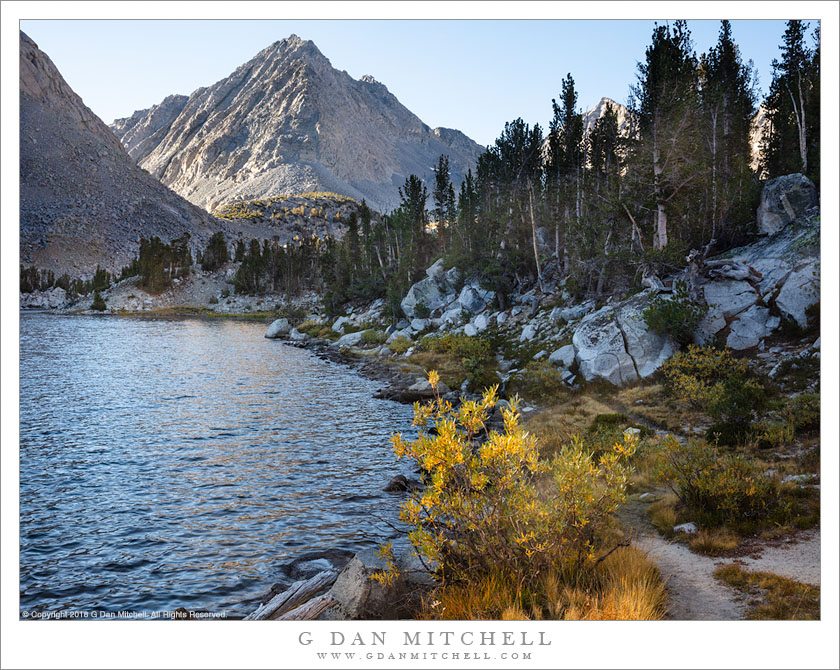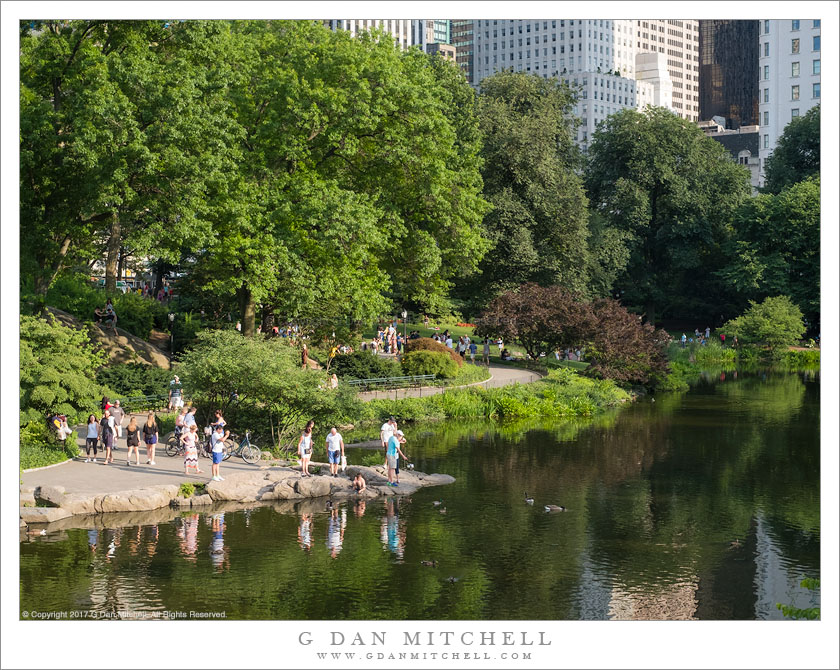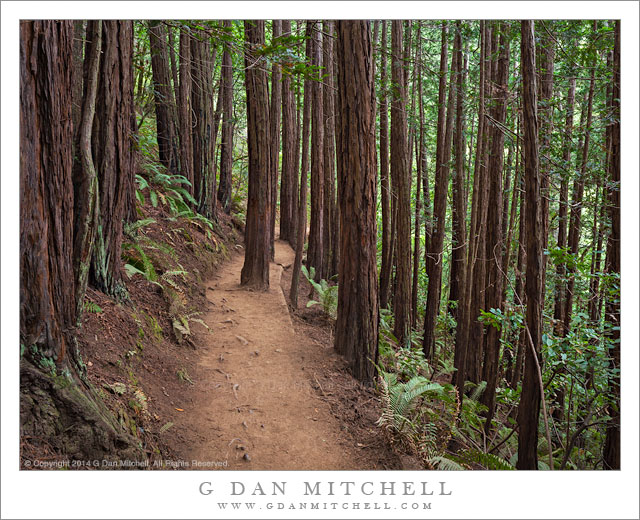
Early Autumn Color, Lake and Mountain. © Copyright 2018 G Dan Mitchell – all rights reserved.
Early autumn color along the shore of a Sierra Nevada alpine lake
One of the pleasures of photographing from a backcountry base camp is that I can roll out of my sleeping bag and climb out of the tent… and start photographing almost at my doorstep. We camped near this lake for a full week, and on several mornings and evenings I explored it, gradually pushing out my boundaries, traveling a bit further along and beyond its shoreline, and getting to know it in different light at various times of day.
I made this photograph on one of those morning walks, when I set out slowly towards the far opposite end of the lake near its outlet stream. I was in no hurry, taking time to observe and photograph as I walked. Eventually I made it to that further point, photographed a bit there, and turned around to start back toward camp, continuing to photograph. The lake remained in the shadow of the tall ridge to the left long after sunrise, and as I walked back the first beams of light reached the shoreline. In this photograph a lakeside willow bush is catching some of that first light.
See top of this page for Articles, Sales and Licensing, my Sierra Nevada Fall Color book, Contact Information and more.
 G Dan Mitchell is a California photographer and visual opportunist. His book, “California’s Fall Color: A Photographer’s Guide to Autumn in the Sierra” is available from Heyday Books and Amazon.
G Dan Mitchell is a California photographer and visual opportunist. His book, “California’s Fall Color: A Photographer’s Guide to Autumn in the Sierra” is available from Heyday Books and Amazon.
Blog | About | Flickr | Twitter | Facebook |
Email
All media © Copyright G Dan Mitchell and others as indicated. Any use requires advance permission from G Dan Mitchell.




